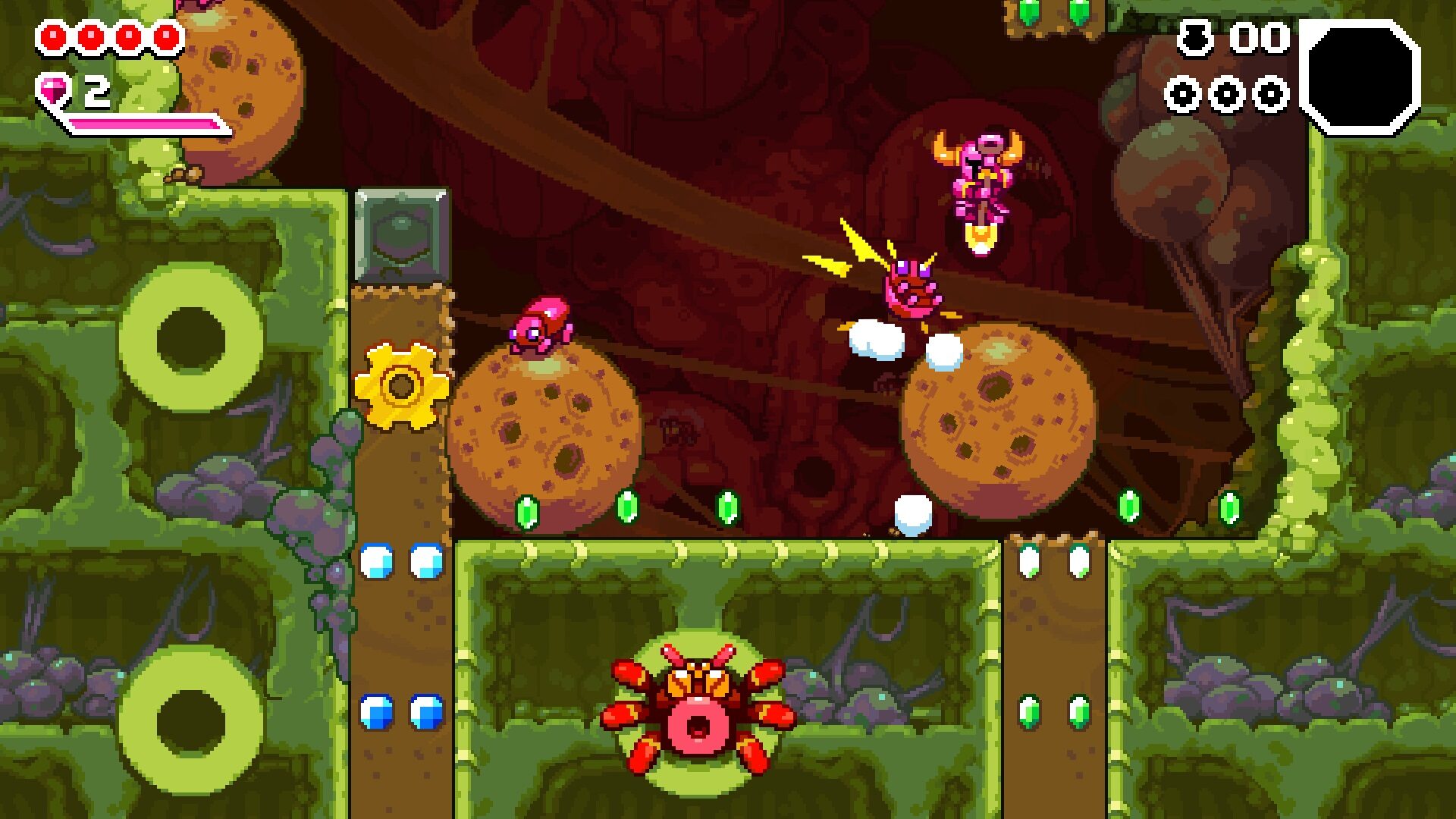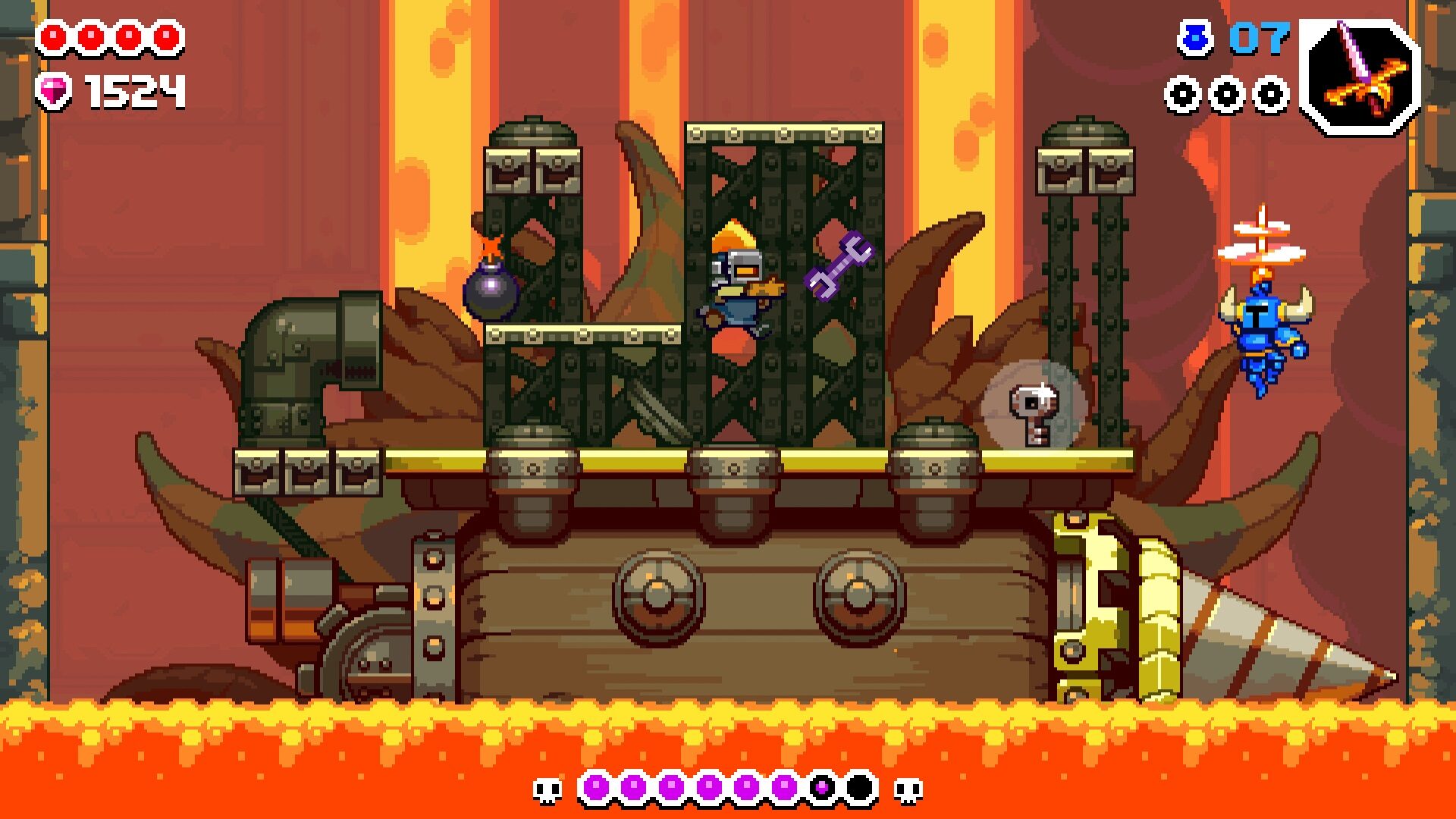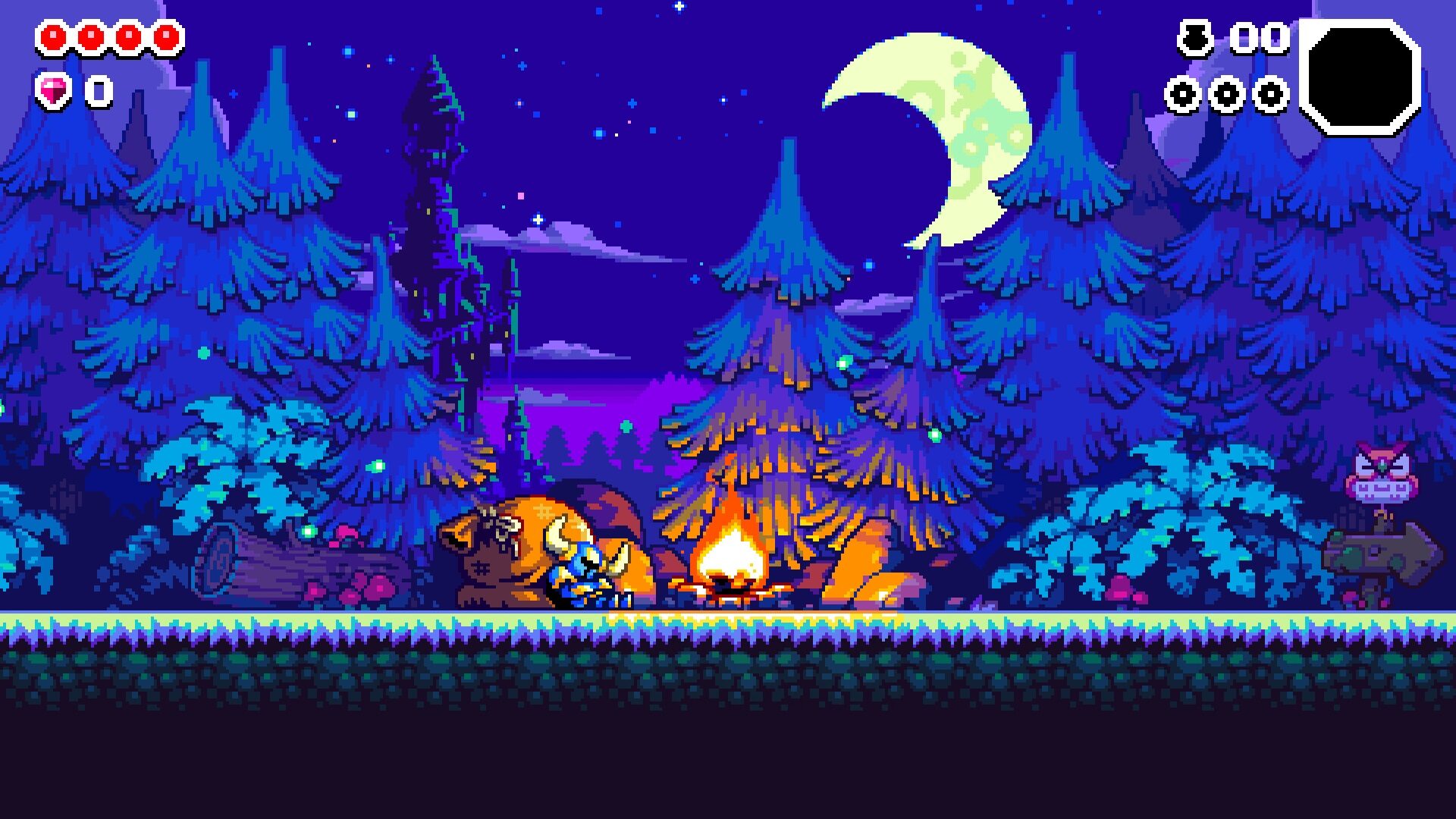After defeating his foes and saving the day in a variety of different genres, Shovel Knight is finally using his namesake weapon for its intended purpose in Shovel Knight Dig. While it might at first glance appear to be a cash-in spin-off, the new downward-moving, roguelite platformer starring the now-iconic titular character stands on its own as a worthy prequel to the original. This joint effort between Yacht Club Games and Bomb Chicken and Gunbrick Reloaded developer Nitrome combines the strengths of both studios into an exceedingly fun experience.
Right from the beginning, Shovel Knight Dig captures what makes a good Shovel Knight game with a characteristically charming story setup. When Shovel Knight takes a break from a long day of adventuring with his partner, Shield Knight, a dastardly foe named Drill Knight swipes his big bag of riches and takes it underground where the rest of the villainous Hexcavators have gathered for a heist. At first, Shovel Knight just wants to get his bag back, but the deeper he digs, the more he begins to realize that something bigger is at stake.
In order to capture Drill Knight, Shovel Knight needs to dig, and that means going down. On the surface, Shovel Knight Dig strongly resembles the Steamworld Dig series, as both games task players with tunneling through their levels. However, while you can certainly draw comparisons (especially in their titles), Shovel Knight Dig still retains Shovel Knight’s intense, retro platformer identity, leaving the more slower-paced, strategic digging to other games.

Fortunately, Shovel Knight’s traditional moveset translates expertly from a horizontal play space to a more vertical one. The hero can still swing his shovel from side to side, but his downward attacks are much more prevalent this time around. His down swipe not only unearths treasure and hits enemies attacking from below, but it also digs out dirt and stone areas beneath Shovel Knight. Likewise, the pogo-like shovel drop is used much more frequently, as Shovel Knight automatically performs it with each jump. This makes it much easier to attack enemies from above, which is convenient as you will be dropping in on them frequently.
Additionally, Shovel Knight once again has access to relics. These magical attacks can be useful, especially the more powerful ones like the Gusteo Wand, but I found myself relying on them less often than I did in the original game. That’s partly because the standard shovel attacks are all I generally needed, but it’s also because, thanks to Dig’s roguelike elements, I didn’t always have my preferred relics on hand.
When Yacht Club and Nitrome first announced Dig, I was a little wary about how Shovel Knight gameplay would translate to a roguelike loop. One of my favorite aspects of the original game was how precisely it was designed, and it’s still one of the only retro-inspired platformers that I’ve played that captures the magic of the classics in the genre while still offering a few modern conveniences and upgrades. Shovel Knight Dig turning its back on that and opting for the trend of going roguelike felt wrong to me. It almost felt cheap.
Fortunately, I was being a total idiot. Sure, Shovel Knight Dig doesn’t have that sense of careful, scientific curation that the Treasure Trove games did, but it offers something a little more wild and unpredictable. Every time you die, you will have to go back to the surface and start again, though you keep most of the gems you earned while digging. You can spend those gems, not directly on unlocks but on the ability for certain relics or accessories (passive buffs) to appear while you’re underground, fighting for your life. You can also use gems to buy tickets that will let you skip ahead, giving you a solid sense of progression.

The reason that starting from the top every time doesn’t get old is that Nitrome’s approach to level design works perfectly with Dig’s roguelike structure. While certain aspects of the run are randomized, the game’s levels aren’t procedurally generated. Well, not completely. Nitrome has designed over 1,000 different rooms which the game takes and randomly arranges into complete levels.
While I don’t doubt that the designers at Nitrome have it in them to create longer, more intricate levels, designing these bite-sized platforming levels is the studio’s exact bread and butter, and Shovel Knight Dig proves that even further. There are also enough hidden secrets to uncover that the levels end up appearing much bigger than they actually are. Even the boss stages change with each run, though in a much more limited way, making it so that no life ever feels exactly the same. Then, whenever you make it to the end of the stage, you get to choose which tunnel you want to dig through next. Each one is marked with a sign that hints at what kind of enemies and obstacles will feature heavily, giving you some sense of control and predictability.
The other major difference between Shovel Knight Dig and the original game is its visuals. While it’s still made out of pixels, these pixels form a more 16-bit art style, as opposed to the classic 8-bit. Shovel Knight is a little beefier and more volumetric, as is the world around him. One of the joys of Dig, especially for fans of the series, will be seeing how the characters’ sprites translate to this new art style. The music, too, sounds like an upgrade from the 8-bit to the 16-bit era, with composer Jack Kaufman returning to the series and taking a lot of inspiration from the best the Sega Genesis had to offer. It all results in a feast for the eyes and ears.
Shovel Knight Dig also gives players plenty of accessibility options that can make navigating its roguelike elements a little more manageable. You can give yourself more hit points, slow the game speed, and make Shovel Knight’s attacks more powerful. I didn’t even realize these options existed until after I beat the game, but now that I do, I look forward to fully taking advantage of them in future playthroughs.
It didn’t take me too long to complete my first run of Shovel Knight Dig, but even several hours in I still have plenty of relics, suits, and accessories to unlock, not to mention a purported “true ending” to experience, which I don’t even know how to trigger yet. However, I will have no qualms about jumping back into the large cavern where Shovel Knight’s campfire once burned, because the game keeps giving me plenty of reasons to do so. While it might not top the original (which is, admittedly, one of my favorite games of all time), Shovel Knight Dig is a worthy prequel to it, and one of the most fun and fair roguelike experiences I’ve played in a while.

Images: Yacht Club Games
|
★★★★★
Shovel Knight Dig isn’t just a cash-in on the series’ popularity. It’s a game that stands on its own merits as a worthy prequel to the original. The titular hero’s moveset translates perfectly to a more vertical orientation, and Nitrome’s bite-sized level design makes full use of Yacht Club’s well-established gameplay style. The 16-bit-style visuals and music are an absolute treat, especially for fans of the series, and the roguelike elements present a nice sense of progression and replayability. Shovel Knight Dig might not be the exact sequel that fans have been clamoring for, but it’s the next best thing. |
Developer Nitrome, Yacht Club Games Publisher Yacht Club Games ESRB E10+ - Everyone 10+ Release Date 09.23.2022 |
| Shovel Knight Dig is available on Nintendo Switch, PC, and Apple Arcade. Primary version played was for PC. Product was provided by Yacht Club Games for the benefit of this coverage. EGM reviews on a scale of one to five stars. | |

Michael Goroff has written and edited for EGM since 2017. You can follow him on Twitter @gogogoroff.